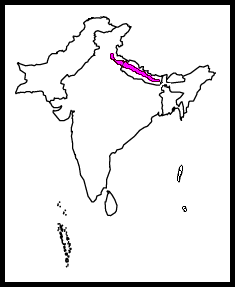Alternative names: Immaculate Wren Babbler; Spotless Wren Babbler
- Pnoepyga immaculata
Identification
With 8.5 - 10cm a small Wren Babbler from India and Nepal with a pale and a dark morph. Very similar to Scaly-breasted Wren Babbler and Pygmy Wren Babbler, although slightly bigger than the last one.
Pale morph:
- Brownish-olive with vague scaling above
- Whitish below, becoming darker on flanks and lower underparts
- Prominent dark scaling below
- Like other Wren Babbler almost tailless
Dark morph:
- Darker above
- Deep fulvous below
Bill longer, wings and upperparts unsoptted, more streaked underneath, dark malar line and narrow blue eyering are distinctive and distinguishes this species from the other two Wren Babblers.1
Distribution
| Endemic to the Indian Subcontinent. Found in the Himalayas from E Nepal west to Himachal Pradesh in India. Common in most of its range and not threatened. | |
| Legend |
Taxonomy
Monotypic. Described as recently as 1991.1,3
Habitat
Found near streams and rivers in undergrowth with rocks and boulders. In open parts or at edge of broadleaf evergreen forest, secondary growth or clearings. Usually between 1730 - 3100m, in winter down to 250m.1
Behaviour
Pretty confiding, hopping around in low vegetation and between boulders. Feeds probably on invertebrates.
Breeding season from May to July. One nest found near a small waterfall. No other data available.
Resident species, but altitudinal movements occur.1
References
- Del Hoyo, J, A Elliott, and D Christie, eds. 2007. Handbook of the Birds of the World. Volume 12: Picathartes to Tits and Chickadees. Barcelona: Lynx Edicions. ISBN 978-8496553422
- Rasmussen, PC and JC Anderton. 2005. Birds of South Asia: The Ripley Guide. Barcelona: Lynx Edicions. ISBN 978-8487334672
- Clements, JF. 2007. The Clements Checklist of Birds of the World. 6th ed., with updates to October 2007. Ithaca: Cornell Univ. Press. ISBN 978-0801445019
Recommended Citation
- BirdForum Opus contributors. (2024) Nepal Cupwing. In: BirdForum, the forum for wild birds and birding. Retrieved 6 May 2024 from https://www.birdforum.net/opus/Nepal_Cupwing




